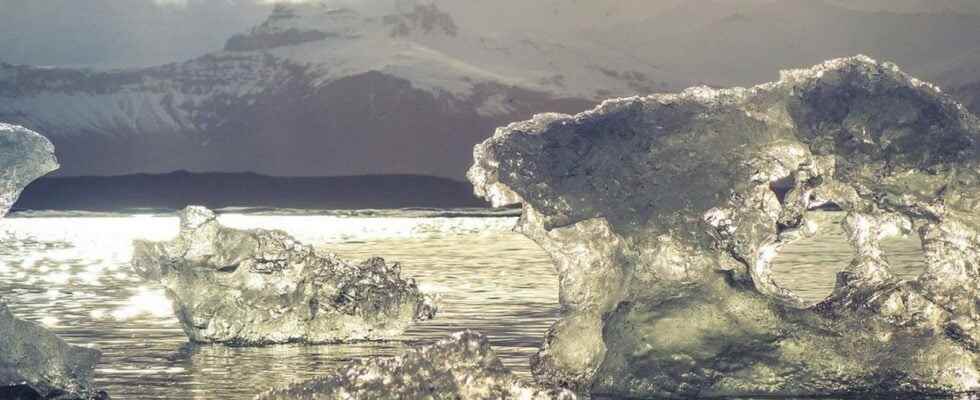The Arctic is the northernmost part of the planet, where the average temperature of the hottest month is below 10 ° C. Countries that are close to the Arctic fight fiercely over the right to exploit their resources. So who owns the Arctic?
You will also be interested
[EN VIDÉO] Walk in the Arctic, a world of fragile ice, with Florian Ledoux Taken on the ground or from a drone, these superb images show the magnificent landscapes of the Far North. The photographer Florian Ledoux admired them and was able to approach animals adapted to this region. It is fragile because warming, more important than elsewhere, is pushing the ice back as humans prepare to make it a convenient seaway.
It is in theArctic that is the North Pole. The region as a whole is inscribed in the polar Circle. In winter, the area is completely covered with ice and the temperature reaches -60 ° C.
During the season the coldest of the year, the vegetation that dominates the region is the tundra. However, in slightly warmer areas it is possible to find birch and willow trees. Regarding the wildlife, the Arctic has only a few cash such as polar bears, musk oxen and arctic seals.
While the South Pole owns land, theArctic is actually a reserve ofpure water frozen. There is no land north of Asia, Europe and North America. This is why the law governing this area is the Law of the Sea, which consists of an international treaty of 1982 signed jointly by all countries having territories beyond the Arctic Circle.
The Law of the Sea states that each country has the right to control up to 200 miles from its coast, which is equivalent to 370 km. The countries concerned are Russia, the United States (via Alaska), Canada, Norway and Denmark (via Greenland). But the question is how to determine where the land coast begins. The country that can prove that its crust submerged exceeds 200 miles sees its territory counted from this point.
Russia has repeatedly claimed thousands of square kilometers in the Arctic. In 2007, it even planted a Russian flag at the bottom of polar waters, at a depth of 4,261 meters. The United Nations Convention never granted him these claims.
What do we find in the Arctic?
The great interest of the nations around the Arctic Circle is the large amount of oil and natural gas concentrated in this frozen part of the Earth. The Arctic holds a third of the planet’s hydrocarbon reserves, including natural gas and the equivalent of 400 billion oil barrels.
However, there are significant engineering difficulties in achieving the extraction and it is impossible to live in these remote and cold areas. Another difficulty is that during the summer it is sunny all day, while in the winter it is constantly dark.
Despite everything, since 2018, Russian teams have started work to extract natural gas in the Arctic. She built power plants liquefaction, airports and deep-water ports, accessible to boats with reinforced hulls, ensuring the transport of the extracted gas.
Who manages the Arctic?
The CouncilArctic was created in 2006 with the aim of distributing the responsibility for the melting of frozen fresh water, and not to divide the spaces of the pole itself. It is an intergovernmental body, with a rotating presidency, which works on the environmental, economic and social aspects of the sustainable development in the Arctic region.
With the discovery of the resources that exist in the Arctic, the countries whose territories border the Arctic Circle have started to fight more bitterly for the right to exploit the resources of the region. However, despite all the measures that the Arctic Council can adopt, the implementation of its recommendations is left to the goodwill of each state. This Council was formed by a declaration, so it cannot oblige States to take specific measures. Yet the global warming harms this region and it is the result of activities such as combustion exit from fossils, already practiced by Russia in Arctic.
Interested in what you just read?
.
fs4
